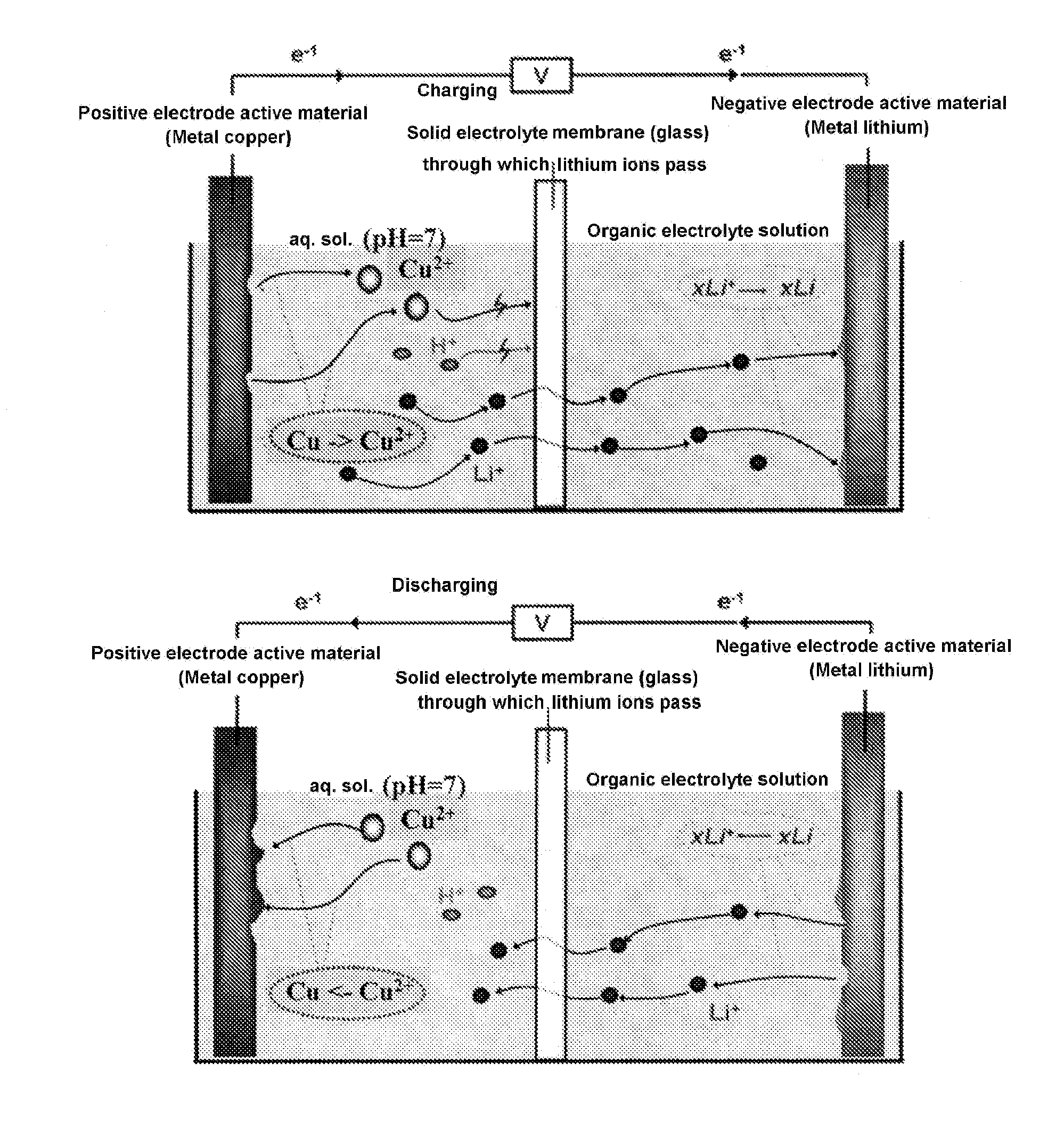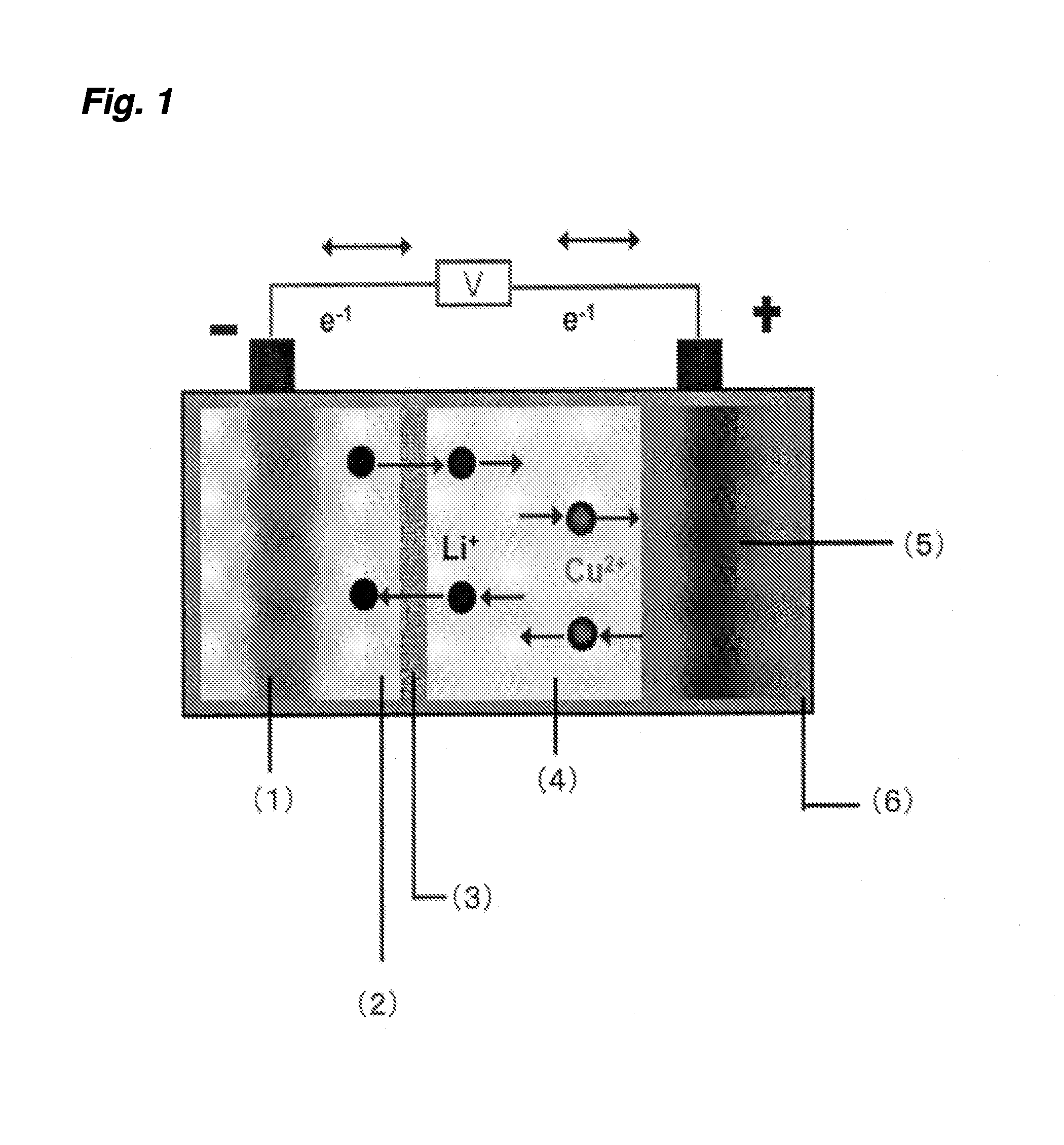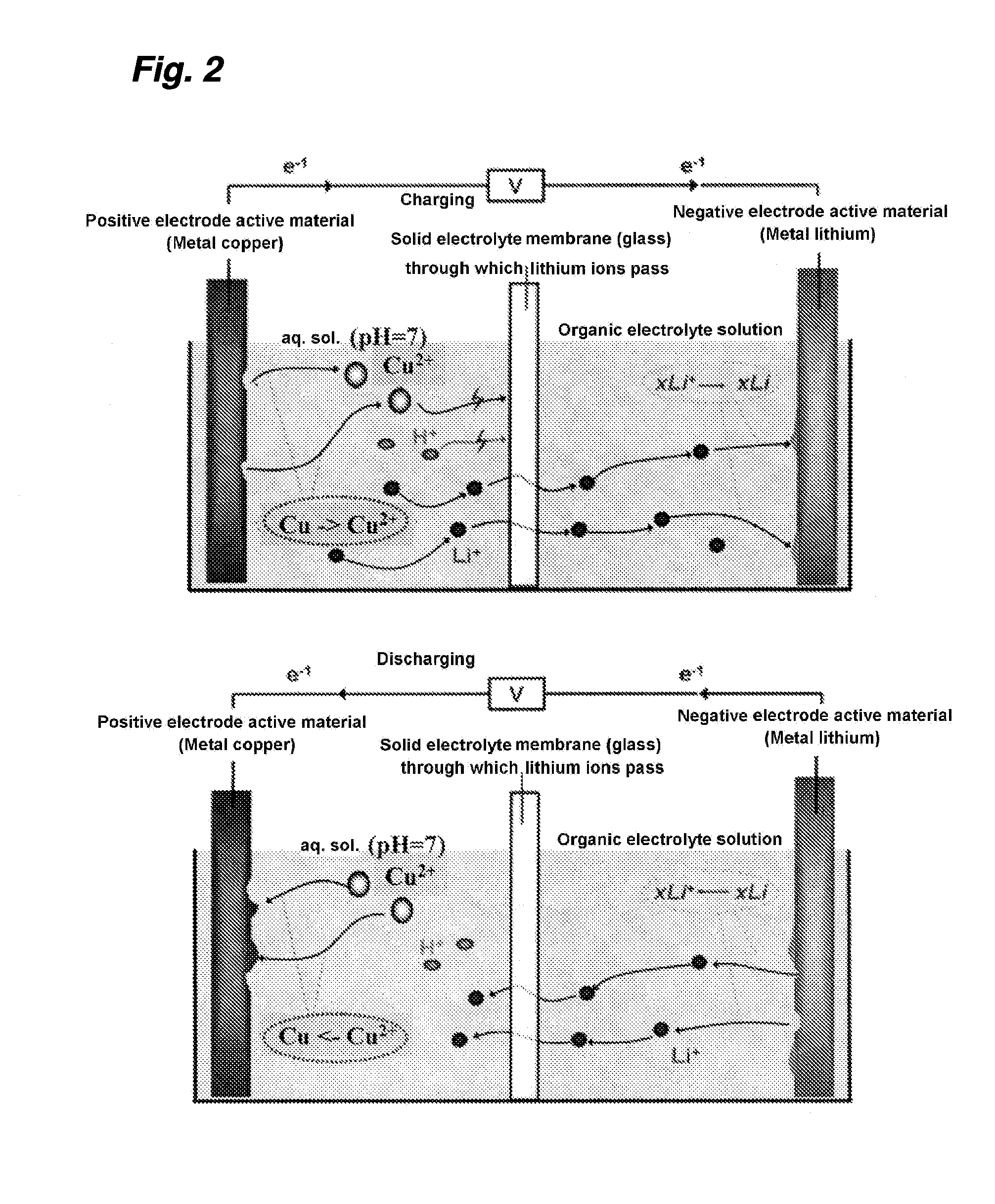Lithium secondary cell
a secondary cell and lithium technology, applied in the field of lithium secondary cells, can solve the problems of limited material capacity, shortening the life of the charge/discharge cycle, etc., and achieves the effects of preventing cycle deterioration, high electric capacity, and remarkably increasing electric capacity
- Summary
- Abstract
- Description
- Claims
- Application Information
AI Technical Summary
Benefits of technology
Problems solved by technology
Method used
Image
Examples
example 1
[0061]In the device shown in FIG. 1, a lithium cell was prepared, by using a metal lithium ribbon as a negative electrode 1, 1.5 ml of an organic electrolyte in which 1 M of LiClO4 had been dissolved (EC / DEC) as a negative electrode-electrolyte solution 2, a lithium ion solid electrolyte (a NASICON-type lithium ion conductor LISICON: 0.15 mm, ion conductivity 2×10−4 S / cm2) as a separator 3, 1.5 ml of a 2-M aqueous LiNO3 solution as a positive electrode-electrolyte solution 4, a metal copper as a positive electrode 5, and a glass cell as a container 6, and a charge / discharge test was conducted.
[0062]When the cell is charged, the copper in the metal copper ribbon is dissolved in the aqueous solution (Cu=>Cu2++2e−). At the same time, the Li+ existing in the aqueous solution transfers to the side of the organic electrolyte solution, through the glass substrate of the lithium ion solid electrolyte. At the same time, the Li+ existing in the organic electrolyte solution is deposited on the...
example 2
[0067]In the device shown in FIG. 1, a lithium cell was prepared, by using a metal lithium ribbon as a negative electrode 1, 1.5 ml of an organic electrolyte in which 1 M of LiClO4 had been dissolved (EC / DEC) as a negative electrode-electrolyte solution 2, a lithium ion solid electrolyte (a NASICON-type lithium ion conductor LISICON: 0.15 mm, ion conductivity 2×10−4 S / cm2) as a separator 3, 1.5 ml of a 2-M aqueous LiNO3 solution as a positive electrode-electrolyte solution 4, and a metal silver as a positive electrode 5, and a charge / discharge test was conducted.
[0068]Next, in order to measure the profile of the charge / discharge cycles of this cell, the cell was charged at a current of 2 mA over 2 hours, and discharged at a current of 2 mA, and these operations were repeated. The result of the charge / discharge profile is shown in FIG. 7. From FIG. 7, it is found that this cell had a discharge capacity of 248 mAh / g that is approximately equal to a theoretical volume, without dependin...
PUM
| Property | Measurement | Unit |
|---|---|---|
| current | aaaaa | aaaaa |
| current | aaaaa | aaaaa |
| current | aaaaa | aaaaa |
Abstract
Description
Claims
Application Information
 Login to View More
Login to View More - R&D
- Intellectual Property
- Life Sciences
- Materials
- Tech Scout
- Unparalleled Data Quality
- Higher Quality Content
- 60% Fewer Hallucinations
Browse by: Latest US Patents, China's latest patents, Technical Efficacy Thesaurus, Application Domain, Technology Topic, Popular Technical Reports.
© 2025 PatSnap. All rights reserved.Legal|Privacy policy|Modern Slavery Act Transparency Statement|Sitemap|About US| Contact US: help@patsnap.com



